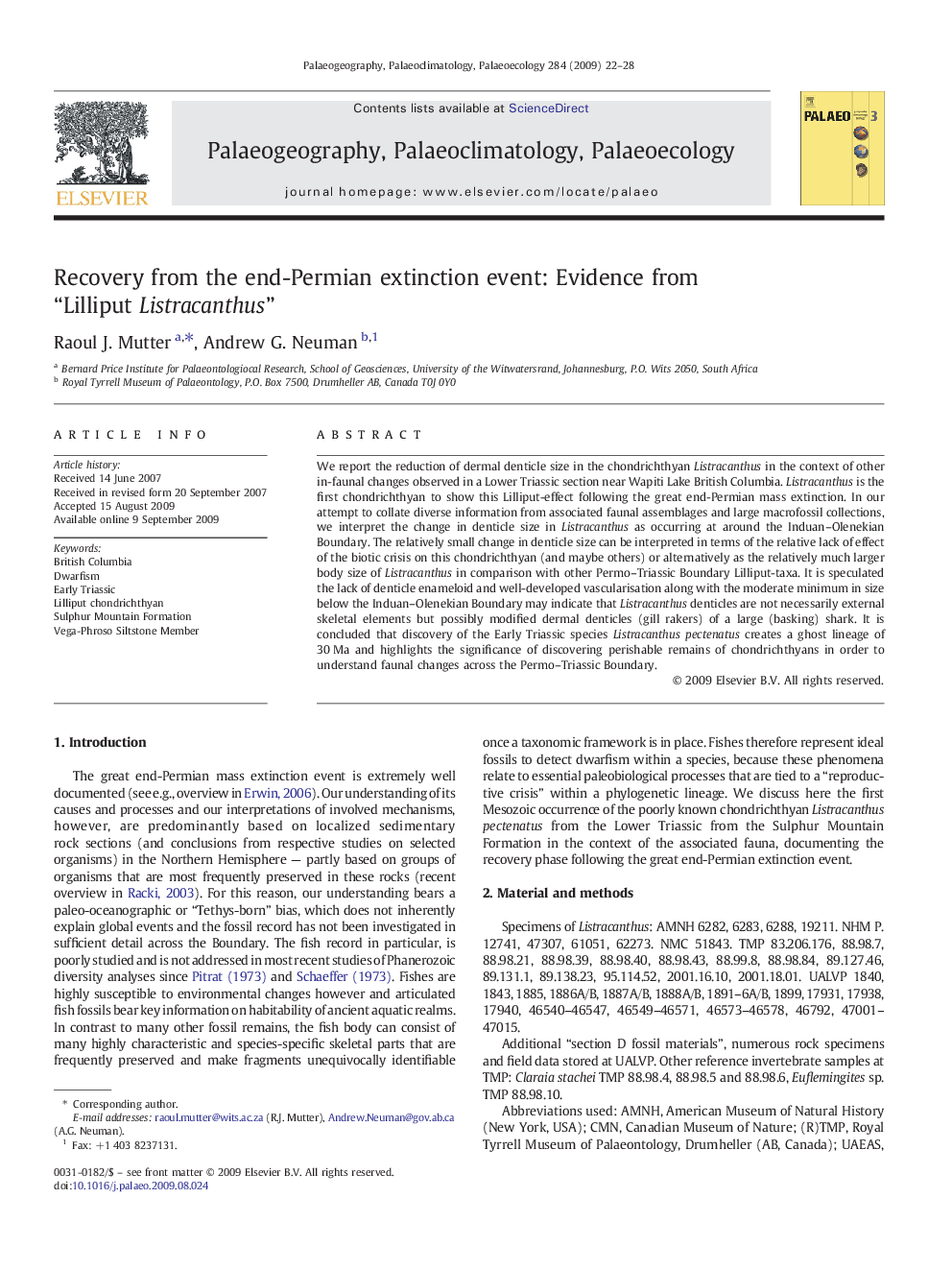| Article ID | Journal | Published Year | Pages | File Type |
|---|---|---|---|---|
| 4467936 | Palaeogeography, Palaeoclimatology, Palaeoecology | 2009 | 7 Pages |
We report the reduction of dermal denticle size in the chondrichthyan Listracanthus in the context of other in-faunal changes observed in a Lower Triassic section near Wapiti Lake British Columbia. Listracanthus is the first chondrichthyan to show this Lilliput-effect following the great end-Permian mass extinction. In our attempt to collate diverse information from associated faunal assemblages and large macrofossil collections, we interpret the change in denticle size in Listracanthus as occurring at around the Induan–Olenekian Boundary. The relatively small change in denticle size can be interpreted in terms of the relative lack of effect of the biotic crisis on this chondrichthyan (and maybe others) or alternatively as the relatively much larger body size of Listracanthus in comparison with other Permo–Triassic Boundary Lilliput-taxa. It is speculated the lack of denticle enameloid and well-developed vascularisation along with the moderate minimum in size below the Induan–Olenekian Boundary may indicate that Listracanthus denticles are not necessarily external skeletal elements but possibly modified dermal denticles (gill rakers) of a large (basking) shark. It is concluded that discovery of the Early Triassic species Listracanthus pectenatus creates a ghost lineage of 30 Ma and highlights the significance of discovering perishable remains of chondrichthyans in order to understand faunal changes across the Permo–Triassic Boundary.
